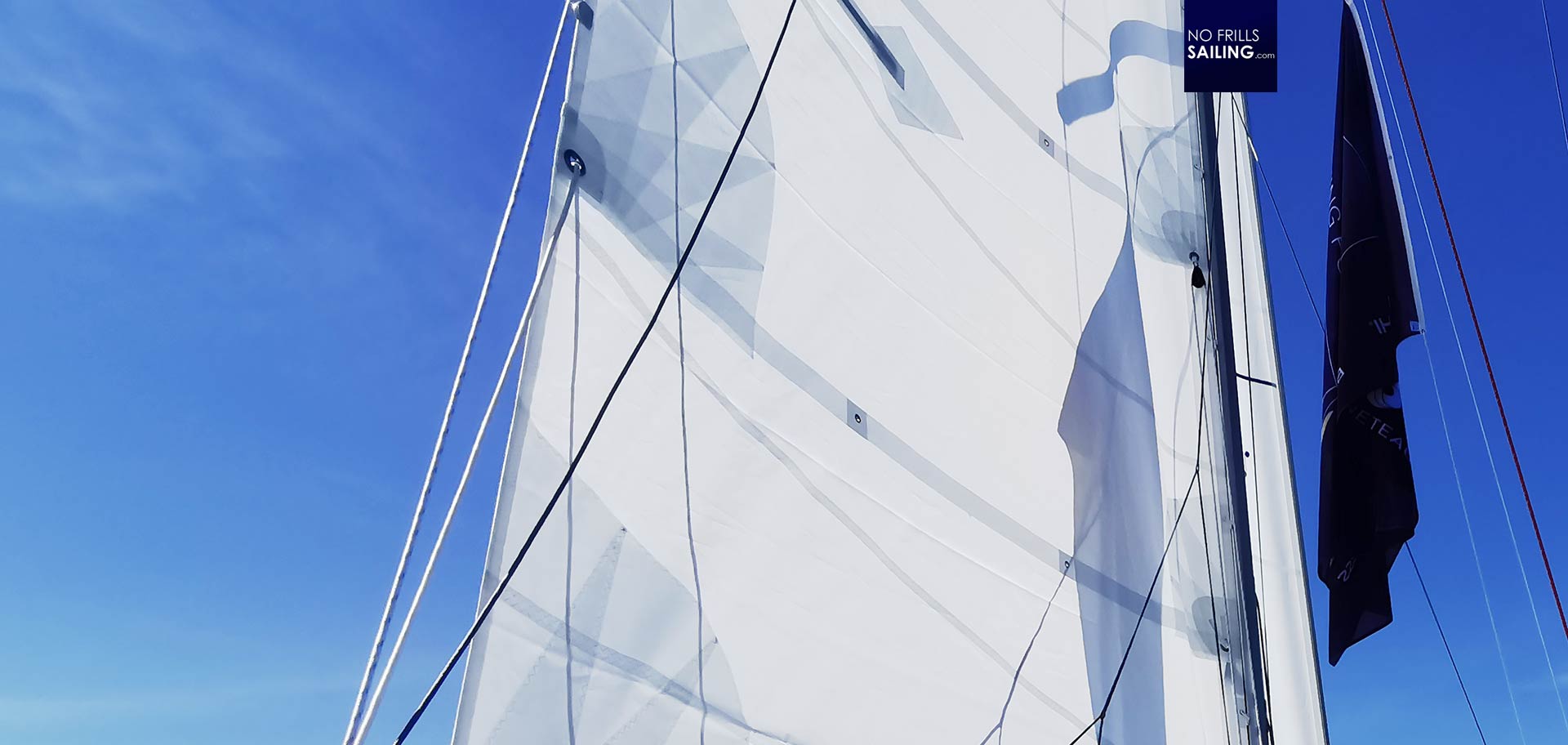I am back from a handover of another sailboat and want to share a nice little episode with you, maybe you have experienced it by yourself already. If you are a newbie to boating and have the commissioning of your sailboat coming up, this might help you prevent a really annoying mistake in rigging.

To start with, everything went smooth with the boat and we´ve had surprisingly little issues with this brand new Oceanis 30.1. The mood was high and the weather was awesome. A bit too awesome for my taste: Sunny sky and a relentlessly burning sunshine, temperatures hovering in the high 30ies. We were sweating like pigs, no wind whatsoever, our brains cooked. But, as we have done this literally dozens of times before, we were sure, we´d make it this time too without any problems.
Setting up the reefing lines in the boom
This was also the case a week before. Same type of boat, different area. My colleague was setting up the boom, preparing it to be fitted whilst our other guys were already stepping the mast. We´ve had already fitted the mast with the halyards, VHF-cable, Windex and lighting. He really was working with dedication because we know that especially the reefing is a safety-relevant function of the rigging.

Connecting the pilot lines to the actual reefing lines, pulling it through the boom and have both ends coiled up accordingly. Just by the book. He prepared the lines for the first and the second reefs to left and right duct, in the middle the outhaul. Easy as ABC. At least so I thought.

After fitting of the boat and going out for a sea trial, I pulled up the mainsail completely for the first time and … the reefing line ran out, left the fastener and ended up swinging at the mast foot. I was furious! Why in the name of Poseidon could he interchange something so childishly easy as a longer and a shorter line?! Reef 1 had the (longer) line of Reef 2, Reef 2 the (yes, you guessed it, shorter!) line of Reef 1. So I went back to the marina.
Reefing Mnemonic: 1 is 2 and 2 is one
When I had moored the boat, I myself took out the lines again, connected the pilots, changed the lines and started all over. 1.5 hours sweating in the brute sun. “Learning through pain”, that´s what my boss always says. Finally finishing the work, I sent a picture of sheer pride to my colleague. A day later – handover day – I went out to sea with my clients. It was a gorgeous day. Mainsail went up … and again (!) the line ran out. What the …?! I was puzzled. Speechless. And five minutes later after thinking it over, embarrassed too.

So, what has happened? Well, when setting up the lines “on the dry”, we both worked with caution. But during fitting the lines to the sail, our brains got twisted. Because, when hoisting the mainsail to put in the reefs, literally, the first reef to be put in is in fact the second (!) reef. Then, after all is set, the mainsail is hoisted again and the second reef to go in the in fact the first reef. What a brainfuck! Honestly, it´s easy: When putting in a reef in stronger breeze, the sail will go down, so on its way down the first reef you put in is … well, the first reef. Wrapping your head about this out in the burning sun turned out being a shemozzle for sure.

Now, after this lesson learned, last week, again, the reefing lines had to be put to the boat´s boom. I did it myself. Unpacking the fresh lines, I had them out the whole length. First because I wanted to get rid of the curls, secondly to check the actual length and which line is for which reef. Then they went into the boom and minutes later to the mast.
Tested for you …
When we set sail for the shakedown sea trial in the boat, well, I shall say it was a kind of special moment to check if my work was right or not. And I can tell you, my heart rate skipped a beat when the reefing points passed and … yes! … the lines had apparently been connected in the right order to the sail. The short line for Reef 2, the long line for Reef 1. You can imagine my relief.

So, maybe this anecdote helps you prevent this little annoying mistake. I found it amusing to talk with my friends within the sailing community, as literally every second one was nodding, smiling and admitting to having undergone the same procedure at least once. So, as you can see, apparently sometimes one is two and two is one indeed!
You may also like to read these related articles:
Inmast furling sails: Quantum-power!
Rigging my (then) brand new First 27 SE the first time
The brand new mast by Seldén for my Omega 42
